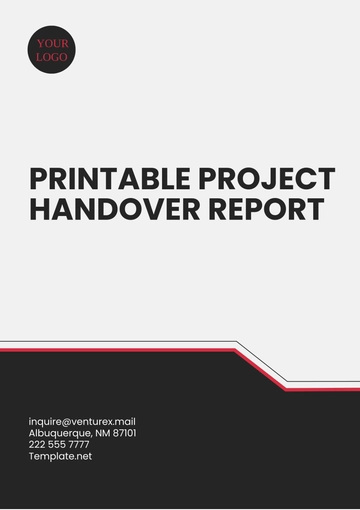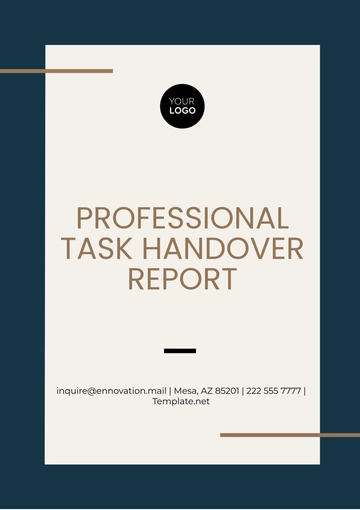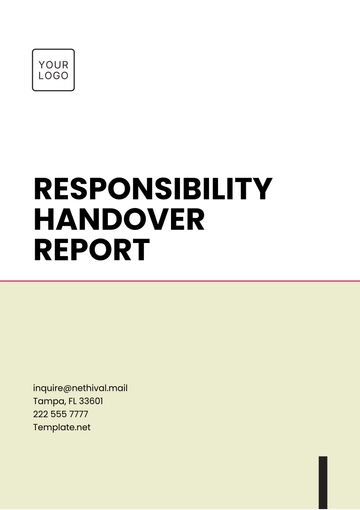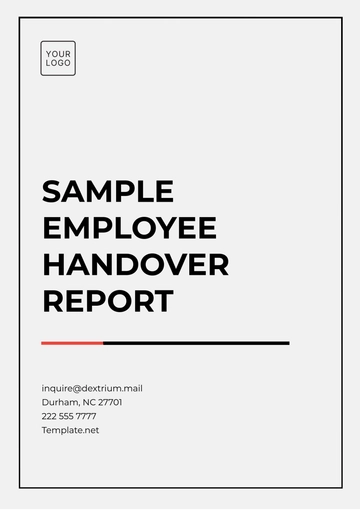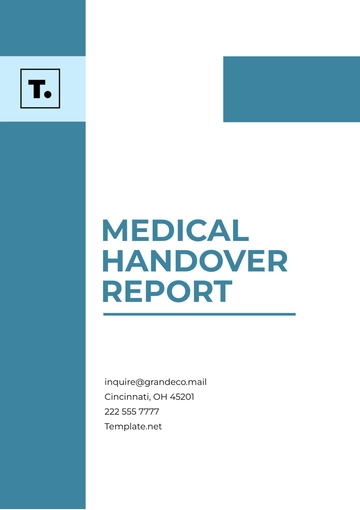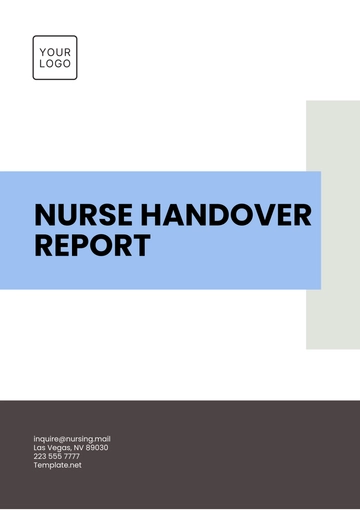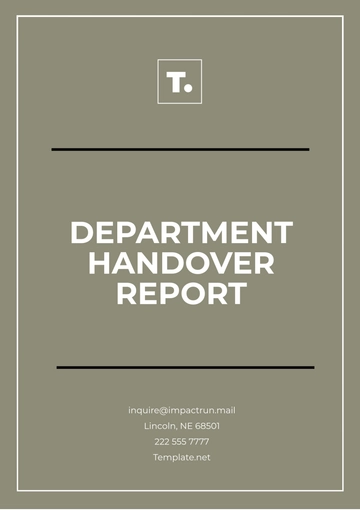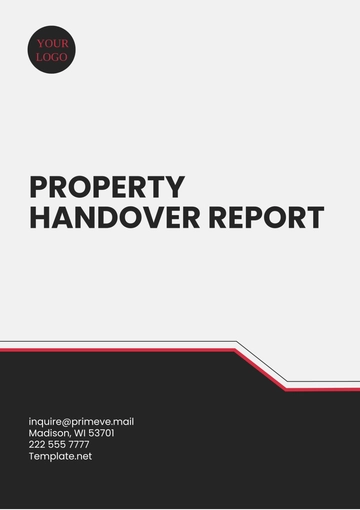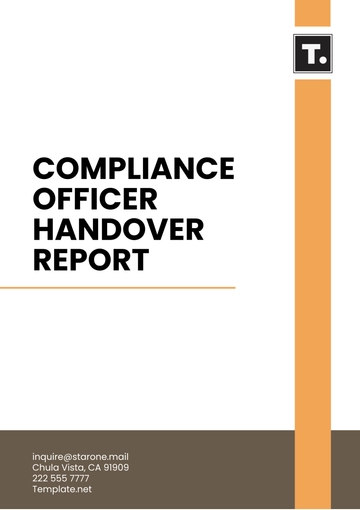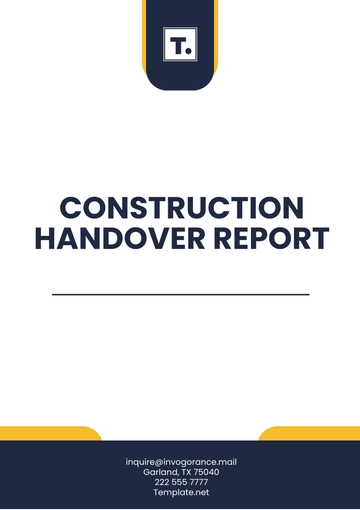Free Nursing Home Handover Report
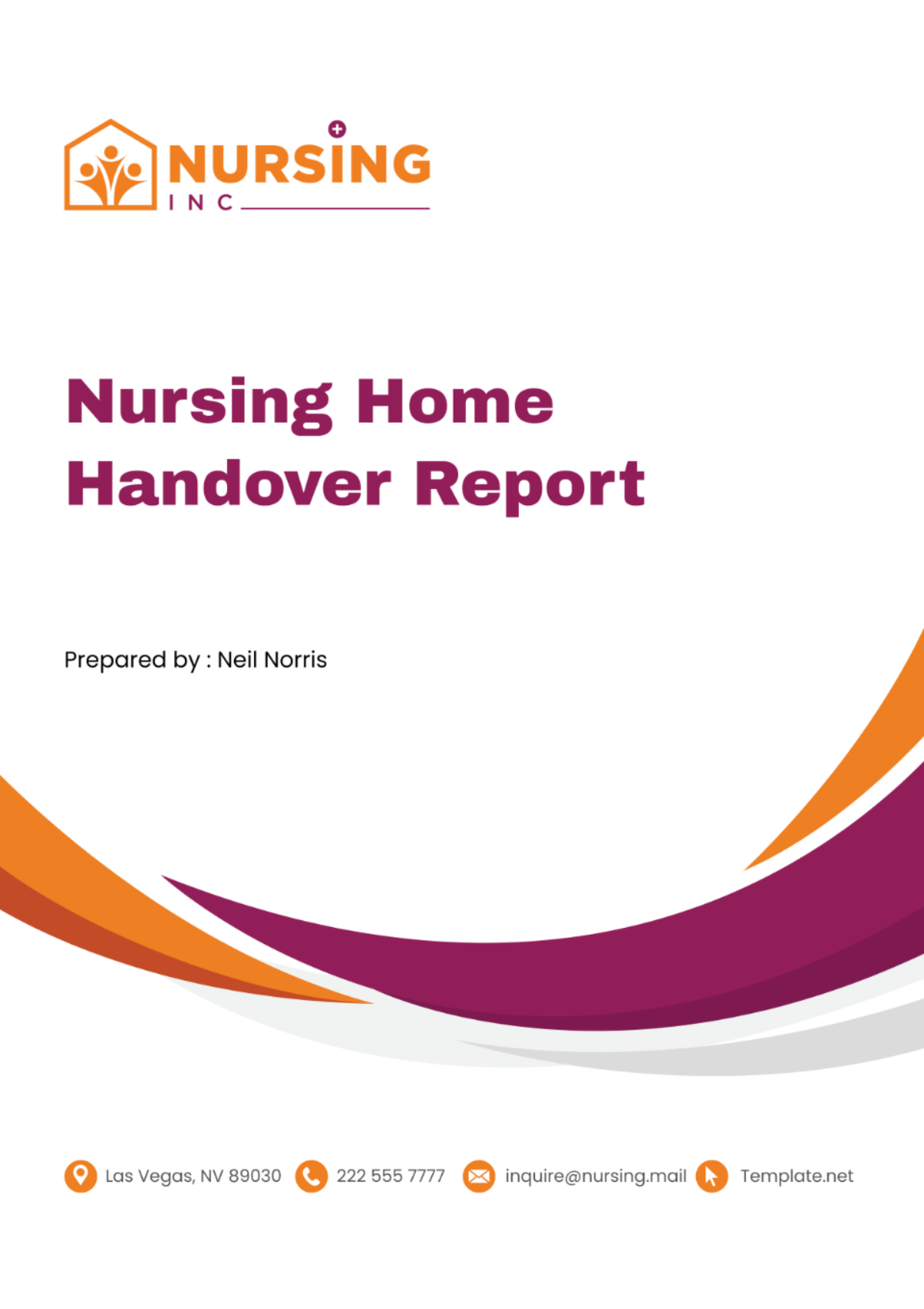
I. Resident Information:
The table below provides essential information about each resident, including their name, age, medical diagnoses, care requirements, and room number, facilitating efficient communication and coordination of care among nursing staff during shift handovers.
Name | Age | Medical Diagnoses | Care Requirements | Room # |
|---|---|---|---|---|
John Smith | 75 | Hypertension, Diabetes | Requires assistance with ADLs, medication management | 101 |
Mary Johnson | 82 | Dementia, Osteoarthritis | Needs assistance with mobility, memory care support | 102 |
Robert Brown | 68 | Stroke, Hemiparesis | Requires physical therapy, assistance with transfers | 103 |
Susan Davis | 90 | Congestive Heart Failure, COPD | Oxygen therapy, monitoring fluid intake | 104 |
Michael Wilson | 79 | Alzheimer's Disease | Requires constant supervision, memory care support | 105 |
Linda Martinez | 85 | Parkinson's Disease | Needs assistance with mobility, medication management | 106 |
Sarah Thompson | 93 | Osteoporosis, Depression | Requires fall prevention measures, emotional support | 107 |
James Lee | 72 | Traumatic Brain Injury | Requires specialized care, neurorehabilitation | 108 |
Emily Clark | 78 | Rheumatoid Arthritis | Assistance with activities of daily living, pain management | 109 |
Richard Taylor | 88 | Chronic Kidney Disease, Diabetes | Renal diet management, monitoring fluid intake | 110 |
II. Health Status:
During this shift, the overall health status of residents remained stable. However, the following observations and concerns were noted:
John Smith (Room 101):
Blood pressure: 130/80 mmHg, within normal range; blood glucose levels monitored regularly (Fasting: 110 mg/dL).
Requires assistance with insulin administration and meal preparation due to diabetes.
No significant changes in health status reported; remains alert and oriented to person, place, and time.
Mary Johnson (Room 102):
Experienced increased confusion and restlessness, consistent with dementia progression.
Administered prescribed medications for pain management and behavioral symptoms.
Regular repositioning and skin checks performed to prevent pressure ulcers.
Robert Brown (Room 103):
Participated in physical therapy sessions to improve mobility and range of motion.
Blood pressure: 140/90 mmHg, stable; no signs of postural hypotension.
Requires assistance with activities of daily living (ADLs) and toileting; urinary continence maintained with intermittent catheterization.
Susan Davis (Room 104):
Stable oxygen saturation levels (SpO2: 94-96%) on supplemental oxygen at 2 liters per minute via nasal cannula.
Monitored for signs of exacerbation of congestive heart failure (CHF) and chronic obstructive pulmonary disease (COPD).
Requires assistance with mobility and activities due to dyspnea on exertion.
Michael Wilson (Room 105):
Engaged in structured activities to stimulate cognitive function and memory.
Exhibits wandering behavior; interventions implemented to ensure resident safety.
Continues to require cueing and assistance with feeding and personal hygiene tasks.
Linda Martinez (Room 106):
Medications administered for Parkinson's disease management (Carbidopa/Levodopa).
Monitored for dyskinesias and motor fluctuations; adjustments made to medication dosages as needed.
Requires assistance with ambulation and transfers due to gait disturbances and balance impairment.
Sarah Thompson (Room 107):
No significant changes in mood or affect noted; engaged in social activities with peers.
Skin integrity assessed; no signs of pressure ulcers or skin breakdown observed.
Requires assistance with toileting and hygiene; incontinence briefs changed as needed.
James Lee (Room 108):
Stable neurological status following traumatic brain injury (TBI); monitored for signs of increased intracranial pressure.
Participates in rehabilitation therapy to improve motor function and cognitive abilities.
Requires specialized care and close monitoring for seizure activity; antiepileptic medications administered as prescribed.
Emily Clark (Room 109):
Received pain management interventions for rheumatoid arthritis flare-up.
Range of motion exercises performed to prevent contractures and maintain joint flexibility.
Requires assistance with dressing changes and wound care for pressure ulcers on lower extremities.
Richard Taylor (Room 110):
Strict adherence to renal diet regimen to manage chronic kidney disease (CKD).
Blood glucose levels monitored due to comorbid diabetes mellitus; insulin administered as needed.
Requires assistance with medication management and fluid intake monitoring to prevent electrolyte imbalances.
III. Medication Administration:
The table below summarizes the medications administered to residents during the shift, including dosage, route, and frequency.
Resident | Medication | Dosage | Route | Frequency |
|---|---|---|---|---|
John Smith | Insulin | 10 units | Subcutaneous | Before meals |
Lisinopril | 10 mg | Oral | Once daily | |
Metformin | 500 mg | Oral | Twice daily | |
Mary Johnson | Acetaminophen | 500 mg | Oral | Every 6 hours PRN |
Donepezil | 5 mg | Oral | Once daily | |
Robert Brown | Clopidogrel | 75 mg | Oral | Once daily |
Baclofen | 10 mg | Oral | Three times daily | |
Omeprazole | 20 mg | Oral | Once daily | |
Susan Davis | Furosemide | 40 mg | Oral | Once daily |
Albuterol sulfate | 2.5 mg | Nebulization | Every 4-6 hours PRN | |
Michael Wilson | Memantine | 10 mg | Oral | Twice daily |
Trazodone | 50 mg | Oral | At bedtime | |
Linda Martinez | Carbidopa/Levodopa | 25/100 mg | Oral | Three times daily |
Rivastigmine | 4.6 mg | Transdermal | Once daily | |
Sarah Thompson | Sertraline | 50 mg | Oral | Once daily |
Colace | 100 mg | Oral | Twice daily | |
James Lee | Keppra | 500 mg | Oral | Twice daily |
Divalproex sodium | 250 mg | Oral | Twice daily | |
Emily Clark | Methotrexate | 10 mg | Oral | Once weekly |
Prednisone | 5 mg | Oral | Once daily | |
Richard Taylor | Lisinopril | 10 mg | Oral | Once daily |
Insulin glargine | 20 units | Subcutaneous | At bedtime |
IV. Care Plan Updates:
John Smith (Room 101):
Updated care plan to include regular blood glucose monitoring before meals and bedtime.
Scheduled follow-up with dietitian to review dietary preferences and meal planning.
Physical therapy consultation requested to address mobility concerns and improve strength and balance.
Mary Johnson (Room 102):
Adjusted care plan to incorporate additional sensory stimulation activities for cognitive stimulation.
Scheduled family meeting to discuss advanced care planning and end-of-life preferences.
Implemented fall prevention strategies, including bed alarms and non-skid footwear.
Robert Brown (Room 103):
Modified care plan to focus on rehabilitation goals, including increasing independence with activities of daily living.
Coordinated with occupational therapy for home safety assessment and adaptive equipment recommendations.
Scheduled physician follow-up to assess effectiveness of medication regimen for spasticity management.
Susan Davis (Room 104):
Updated care plan to include regular monitoring of fluid intake and output to manage congestive heart failure.
Implemented respiratory care plan to optimize oxygenation and prevent exacerbations of COPD.
Scheduled education session with resident and family on self-management techniques for chronic respiratory conditions.
Michael Wilson (Room 105):
Reviewed care plan with interdisciplinary team to address behavioral challenges associated with Alzheimer's disease.
Implemented structured daily routines and visual cues to reduce agitation and improve engagement.
Collaborated with social services for caregiver support resources and respite care options.
Linda Martinez (Room 106):
Adjusted care plan to include regular assessment and management of motor symptoms associated with Parkinson's disease.
Scheduled physical therapy sessions for gait training and balance exercises.
Implemented environmental modifications to enhance safety and promote independence in activities of daily living.
Sarah Thompson (Room 107):
Revised care plan to address nutritional needs and promote regular, balanced meals to support emotional and physical well-being.
Coordinated with recreational therapy for participation in social activities and hobbies to alleviate symptoms of depression.
Scheduled cognitive behavioral therapy sessions to address maladaptive coping mechanisms and improve mood regulation.
James Lee (Room 108):
Updated care plan to focus on seizure management strategies, including seizure precautions and medication adherence.
Coordinated with neurology for seizure monitoring and adjustment of antiepileptic medications.
Scheduled neurological evaluation for assessment of cognitive function and long-term prognosis following traumatic brain injury.
Emily Clark (Room 109):
Modified care plan to address wound care needs and promote healing of pressure ulcers.
Coordinated with wound care specialist for assessment and implementation of advanced wound care interventions.
Scheduled nutrition consultation for dietary modifications to support tissue repair and prevent further skin breakdown.
Richard Taylor (Room 110):
Reviewed care plan with renal specialist to optimize management of chronic kidney disease and diabetes.
Implemented renal diet education and counseling for adherence to dietary restrictions and fluid management.
Coordinated with pharmacy for medication reconciliation and adjustment of dosages to prevent renal complications.
V. Incidents or Events:
The table below outlines any incidents or events that occurred during the shift, along with the actions taken and follow-up required.
Resident | Incident/Event | Actions Taken | Follow-Up Required |
|---|---|---|---|
John Smith | No incidents reported | N/A | N/A |
Mary Johnson | Minor skin tear while transferring | Wound care provided; family notified | Monitor for signs of infection; reassess wound status |
Robert Brown | No incidents reported | N/A | N/A |
Susan Davis | No incidents reported | N/A | N/A |
Michael Wilson | Wandered into another resident's room | Redirected to own room; safety measures implemented | Monitor for further wandering behavior |
Linda Martinez | No incidents reported | N/A | N/A |
Sarah Thompson | No incidents reported | N/A | N/A |
James Lee | No incidents reported | N/A | N/A |
Emily Clark | No incidents reported | N/A | N/A |
Richard Taylor | No incidents reported | N/A | N/A |
VI. Special Instructions:
John Smith (Room 101):
Ensure proper positioning and pressure relief to prevent pressure ulcers.
Encourage regular exercise and mobility to manage diabetes.
Provide assistance with insulin administration and meal planning to maintain blood glucose levels within target range.
Mary Johnson (Room 102):
Implement frequent reorientation techniques to reduce agitation and anxiety.
Provide emotional support and reassurance during periods of confusion.
Use soft restraints as a last resort to prevent falls and ensure resident safety.
Robert Brown (Room 103):
Assist with range of motion exercises and ambulation to maintain joint flexibility and prevent contractures.
Ensure proper positioning and support during transfers to minimize risk of falls.
Monitor for signs of pain or discomfort and administer pain medication as needed.
Susan Davis (Room 104):
Encourage fluid intake to maintain hydration status and prevent exacerbations of congestive heart failure.
Monitor oxygen saturation levels and respiratory rate regularly; provide supplemental oxygen as prescribed.
Educate resident and family on signs and symptoms of worsening respiratory distress.
Michael Wilson (Room 105):
Implement structured daily routines and visual cues to reduce agitation and improve engagement.
Provide redirection and distraction techniques during episodes of wandering behavior.
Ensure resident's safety by securing environment and monitoring closely for signs of elopement.
Linda Martinez (Room 106):
Assist with medication management to ensure timely administration and compliance with treatment regimen.
Use assistive devices, such as walkers or canes, to promote safe mobility and prevent falls.
Monitor for dyskinesias and motor fluctuations associated with Parkinson's disease medications.
Sarah Thompson (Room 107):
Engage in regular social activities and recreational therapy to promote socialization and improve mood.
Encourage participation in cognitive stimulation exercises and hobbies to maintain cognitive function.
Monitor for signs of depression and report changes in mood or behavior to healthcare team.
James Lee (Room 108):
Implement seizure precautions, including padding bed rails and maintaining a safe environment.
Administer antiepileptic medications as prescribed to prevent seizure activity.
Educate resident and caregivers on seizure management techniques and when to seek medical attention.
Emily Clark (Room 109):
Perform regular skin assessments and repositioning to prevent pressure ulcers.
Ensure proper wound care techniques are followed according to wound care specialist's recommendations.
Collaborate with dietary team to provide adequate nutrition for wound healing and tissue repair.
Richard Taylor (Room 110):
Strict adherence to renal diet regimen to manage chronic kidney disease and prevent electrolyte imbalances.
Monitor fluid intake and output closely to prevent volume overload and exacerbation of renal failure.
Educate resident and family on dietary restrictions and medication management for renal health.
VII. Staffing Issues:
Shortage of certified nursing assistants (CNAs) during peak hours, leading to increased workload and potential delays in resident care.
Inadequate staffing ratios, compromising the quality of care provided to residents and increasing the risk of adverse events.
High staff turnover rates, resulting in frequent changes in caregivers and decreased continuity of care for residents.
Insufficient training and education opportunities for staff members, impacting their ability to effectively address resident needs and provide specialized care.
Burnout and stress among healthcare workers due to heavy workloads, long hours, and emotionally demanding nature of the job.
Lack of interdisciplinary collaboration among healthcare teams, hindering communication and coordination of care for complex cases.
Inconsistent scheduling practices, leading to unpredictability in staffing levels and difficulty in maintaining adequate coverage during all shifts.
Challenges in recruiting and retaining qualified nursing staff, particularly in rural or underserved areas with limited access to healthcare professionals.
Budget constraints and financial pressures limiting the facility's ability to hire additional staff or provide competitive wages and benefits to retain existing employees.
Staffing disparities between different departments or units within the facility, resulting in inequitable distribution of workload and resources among staff members.
VIII. Additional Notes:
Family members of all residents contacted and updated on their loved one's condition and care plan changes.
Interdisciplinary team meeting scheduled to discuss complex cases and coordinate care interventions.
Next shift advised to continue monitoring residents closely and report any changes promptly.
- 100% Customizable, free editor
- Access 1 Million+ Templates, photo’s & graphics
- Download or share as a template
- Click and replace photos, graphics, text, backgrounds
- Resize, crop, AI write & more
- Access advanced editor
Ensure smooth transitions between shifts in nursing home facilities with Template.net's Nursing Home Handover Report Template. Conveniently editable in our AI Editor Tool, this customizable template provides a structured format for documenting essential information to be passed on during shift handovers. Enhance communication, ensure continuity of care, and streamline operations effortlessly with Template.net!
You may also like
- Sales Report
- Daily Report
- Project Report
- Business Report
- Weekly Report
- Incident Report
- Annual Report
- Report Layout
- Report Design
- Progress Report
- Marketing Report
- Company Report
- Monthly Report
- Audit Report
- Status Report
- School Report
- Reports Hr
- Management Report
- Project Status Report
- Handover Report
- Health And Safety Report
- Restaurant Report
- Construction Report
- Research Report
- Evaluation Report
- Investigation Report
- Employee Report
- Advertising Report
- Weekly Status Report
- Project Management Report
- Finance Report
- Service Report
- Technical Report
- Meeting Report
- Quarterly Report
- Inspection Report
- Medical Report
- Test Report
- Summary Report
- Inventory Report
- Valuation Report
- Operations Report
- Payroll Report
- Training Report
- Job Report
- Case Report
- Performance Report
- Board Report
- Internal Audit Report
- Student Report
- Monthly Management Report
- Small Business Report
- Accident Report
- Call Center Report
- Activity Report
- IT and Software Report
- Internship Report
- Visit Report
- Product Report
- Book Report
- Property Report
- Recruitment Report
- University Report
- Event Report
- SEO Report
- Conference Report
- Narrative Report
- Nursing Home Report
- Preschool Report
- Call Report
- Customer Report
- Employee Incident Report
- Accomplishment Report
- Social Media Report
- Work From Home Report
- Security Report
- Damage Report
- Quality Report
- Internal Report
- Nurse Report
- Real Estate Report
- Hotel Report
- Equipment Report
- Credit Report
- Field Report
- Non Profit Report
- Maintenance Report
- News Report
- Survey Report
- Executive Report
- Law Firm Report
- Advertising Agency Report
- Interior Design Report
- Travel Agency Report
- Stock Report
- Salon Report
- Bug Report
- Workplace Report
- Action Report
- Investor Report
- Cleaning Services Report
- Consulting Report
- Freelancer Report
- Site Visit Report
- Trip Report
- Classroom Observation Report
- Vehicle Report
- Final Report
- Software Report




